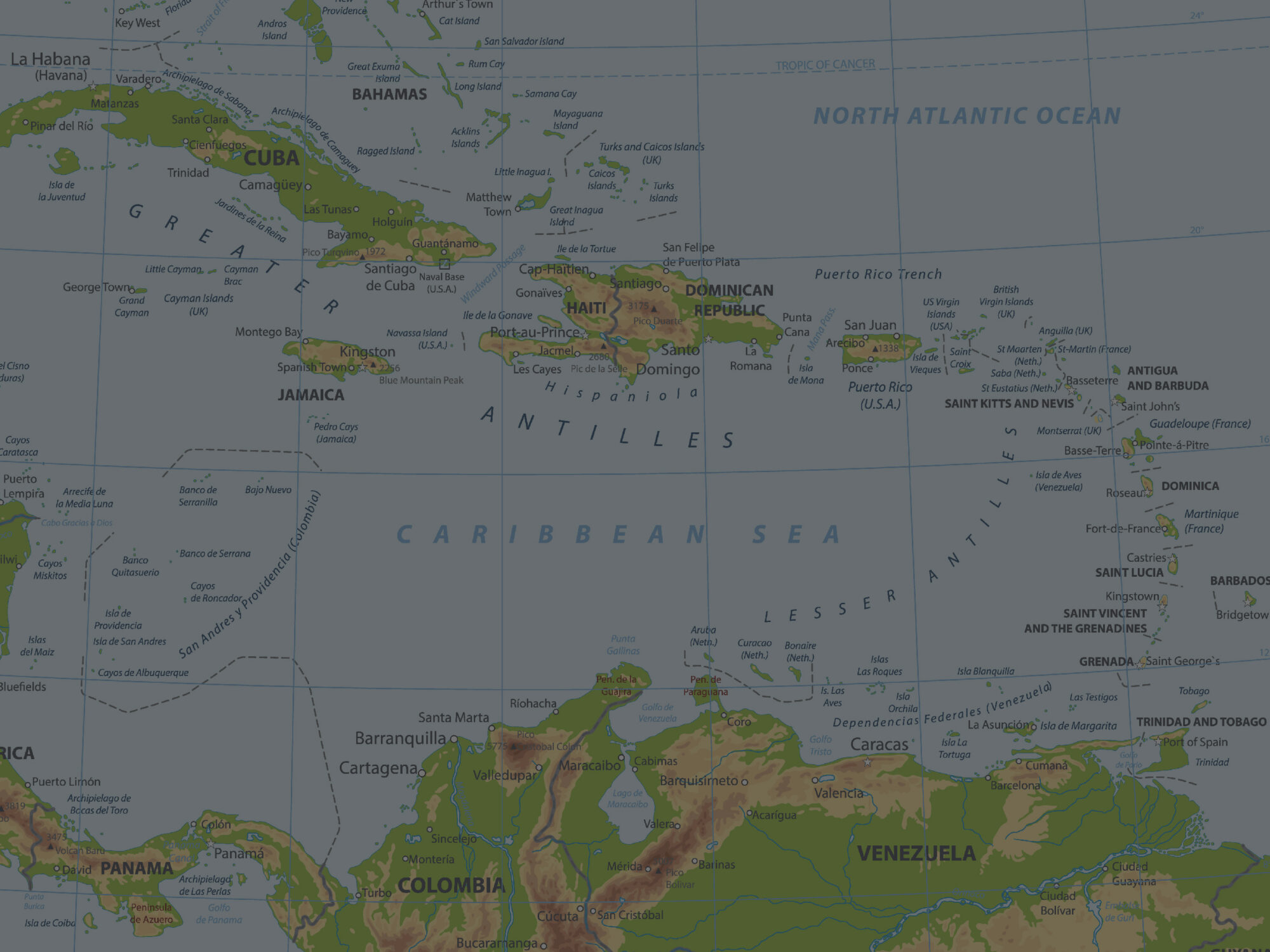The Caribbean might just be the place you need to be not only to live life on a relaxing, sunny, pristine beach but to start or expand your business in a region flourishing with endless business opportunities. If you are thinking of expanding your business to the Caribbean, some of the top locations to consider are the Cayman Islands, Cuba, the Dominican Republic, Haiti, Jamaica, and Puerto Rico, in addition to smaller destinations such as Turks and Caicos, The Bahamas, Aruba, Barbados, and Antigua. However, as companies grow and spread globally, business leaders need to be aware of cultural differences, country backgrounds, and business practices in order to appeal to new places and know the right time to initiate a new endeavor.
Below, we’ve compiled an overview of some main factors to consider before going global to the Caribbean.
The Consumer
The population is steadily growing compared to the previous years, with an average age of 15-64 years old in the Caribbean.1 The local population comprises of many ethnicities and Indigenous peoples, including African Americans, Europeans, and Portuguese. The region also consists of a population of highly talented and excellently skilled people due to CARICOM (Caribbean Community).2
Ranking of Caribbean countries with +1MM populations:
| Rank | Country | % of Caribbean Population | % of Avg. Annual Growth |
| 1 | Cuba | 25.05 | 0.25 |
| 2 | Haiti | 24.45 | 0.98 |
| 3 | Dominican Republic | 23.97 | 2.31 |
| 4 | Puerto Rico | 7.81 | -1.13 |
| 5 | Jamaica | 6.08 | 0.26 |

The Economy
The Caribbean is constantly progressing and has urbanized by 81.12% from 2010 to 2020.3 Today, urbanization is helping connect small and more significant cities in the region and is creating business maturity. With 30 territories, sovereign states, and dependencies overseas, the Caribbean is home to some of the most dynamic economies, with some of the main economic sectors being services (67.6%), industrial (29.05%), and agriculture (6.54%).4 Tourism is also prominent in the region, with the travel and tourism industry bringing in more than US$24 billion in the gross domestic product just in 2020.5 Also, the United Nations Educational, Scientific, and Cultural Organization (UNESCO) is committed to strengthening the region’s tech and science economies and opportunities.
According to the Tax Justice Network, the Cayman Islands are a tax haven for corporations and financial institution services. The country also imposes zero tax rates on income, and as a result, many wealthy corporations are attracted to their tax neutrality. On other hand, Jamaica is the largest producer of bauxite, Trinidad and Tobago are large exporters of oil and gas, and Brazil and Mexico account for more than 60% of Latin America’s international e-commerce market.6
Business Climate & Digital Infrastructure
According to recent research conducted by the Caribbean Association of Investment Promotion Agencies (CAIPA), there continues to be economic growth and increased local demands in sectors such as consumer goods, infrastructure, housing, and tourism in the region. In addition, high-tech agricultural businesses, renewable energy, and tech are also in high demand and present great opportunities for investors. Just as important, the region’s geographic location allows easier access to Latin and South America via direct flights, and the region’s ports are some of the best and most accessible globally, allowing more convenient access to materials and equipment.
Statista reported, “As of January 2021, the Dominican Republic had the largest population of internet users in the Caribbean, with nearly 8.2 million citizens online. Even though the Bahamas ranked seventh with 335.8 thousand users, it is the Caribbean sovereign state with the highest percentage of people online.”
Sustainability
Just as telecommunications and digital internet access are readily available in the region, so are affordable and efficient water and electricity supplies. In addition, locals can benefit from natural gas, cost-effective prices, and modern infrastructure such as solar panels. According to UNESCO, “the UNESCO Man and the Biosphere (MAB) program intends to achieve a sustainable future by supporting relationships between humans and nature. Biosphere reserves conserve biological and cultural diversity, encouraging the sustainable use of natural resources so that all species can thrive in harmony.”
Tips on the Business Culture
- Understand the Caribbean market and embrace every opportunity plus capitalization.
- Make sure to network with local entrepreneurs and investors as much as possible.
- Hierarchy is very important.
- Know the language of the locals and be prepared beforehand.
Besides being a perfect vacation destination, Latin America and the Caribbean offer some of the most dynamic and diverse economic opportunities for various businesses and industries. Learn more about whether expanding to the region is right for you and your business and Go Global!
As members of the Worldcom Public Relations Group network, our Advisors have quick and unfettered access to the resources of more than 80 global partners in 50 countries and six continents to work together in designing and implementing impactful communications strategies for all key stakeholders. Moreover, we provide a fresh perspective, proven processes, and valuable tools to level the playing field for scaling companies competing against big-pocket corporations. Contact us to learn more about what our licensed Comms Advisor can do for your business and how we can help you Go Global.
*This blog post was written by Gabriel Marrero Girona, Lead Intelligence Advisor at DuartePino, in collaboration with Laura Rentas-Giusti, head of the Comms practice at DuartePino, who supports communications strategies for Worldcom’s partner firms in the Caribbean.
References:
1. World Bank; ID 699084
2. https://csme.caricom.org/documents/booklets/4-consumers-in-caricom/file
3. World Bank; ID 699089
5. https://www.worldbank.org/en/country/caribbean/overview#1
6. https://www.statista.com/statistics/726145/latin-america-internet-penetration-countries/

